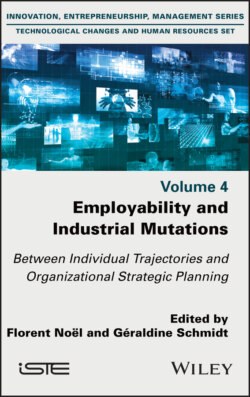Читать книгу Employability and Industrial Mutations - Группа авторов - Страница 41
2.3. Conclusion
ОглавлениеChanges in the workplace are shifting employability issues: the decline in prescribed work, production in smaller batches, project-based organization, the increased importance of the relational dimension of work and so on, require employees to be increasingly adaptable and able to evolve. They also require the ability and willingness to adapt to new situations. They also require an ability and a desire to build one’s own activity while contributing to the organization’s objectives. In the best of cases, the emancipating dimension of work meets a (de)liberated management style.
It is then a matter of designing a work context and management systems that allow individuals to take dual responsibility for their own career paths and for the organization that employs them. However, beyond the incantations:
The question is to understand whether the conditions are actually met for employees to have real freedom to work and develop professionally, which is a prerequisite for taking an active part in the external transition from one job to another or in the internal transition within a company aiming at a change of position, department or profession (Bonvin et al. 2011).
Indeed, developing employability implies avoiding certain traps. The first is that of an incantatory overstatement which would not be reflected in management practices. By putting forward the heroic figure of a free, competent and attractive worker, there is a risk of confronting workers with unrealistic and paradoxical injunctions that have deleterious effects (Périlleux 2005). Concrete and measurable compensations must therefore exist and be supported by management approaches that go well beyond rhetoric (Dietrich 2010).
A second pitfall is that of a loss-making investment if the psychological contract is not clarified: unless we want to encourage turnover, what is the point for an HRD to invest in an employee’s mobility? Conversely, the employee may wonder whether it is reasonable to invest in developing his or her own employability if he or she doubts the existence of prospects for professional advancement. Yet, the development of employability does not necessarily lead to a breakdown in the employment relationship and can contribute to the retention of employees who would see it as proof of the employer’s commitment to them (Philippaers et al. 2017). This paradox should lead us to reflect on the forms of mobility and adaptation that we wish to encourage and to clarify the substance of the psychological contract that we seek to maintain.
Finally, a third trap is the effects of employability on labor market polarization (Forrier et al. 2018). Managerial and individual decisions based on employability may indeed contribute to reinforcing employability inequalities as self-fulfilling prophecies. Employability is reinforced in particular by the experience of mobility and adaptation, which always constitutes a risk for the employee. However, the least employable employees tend to perceive adaptation as more costly for them for more uncertain prospects of success. This can lead them to prefer to stay away from learning and skills development opportunities. In contrast, employees who are better endowed with the resources to support mobility will be more likely to take the necessary risks and develop this capacity. Employers are then likely to focus their efforts on the employees on whom they are most dependent, offering them more opportunities to develop their employability. The idea would therefore be to prevent this polarization by building inclusive policies that promote the employability of the most vulnerable individuals, in a logic of “sustainable” or “durable” employability (Van der Klink et al. 2016).
Finally, the approach to employability developed here makes it possible to go beyond the traditional approaches centered on skills, to supplement the abundant literature on employability seen above all as an initiative and an individual responsibility, and to integrate several key management issues. It also makes it possible to focus not on public employment policies, but on the room for maneuver and the levers of action available to organizations concerned with strengthening the employability of their employees, whether out of concern for their social responsibility or with a more instrumental aim of developing their capacity to cope with change.
